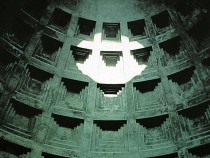
© Ernst Studer
Daylight is crucial for the biorhythm of man. A glimpse of the outside world from within a building provides us with innumerable signs that are important for our physical and mental well-being. Human needs differ considerably in this respect, however. In addition, light evokes a whole range of personal associations, so that perception is not just a matter of lighting mood, but depends on individual experience. Various cultural attitudes also play a role in our reception of light, the significance of which is interpreted differently in different religions. In Christianity, daylight may be seen as a metaphor for God, but even here its interpretation has been subject to a constant process of change.











